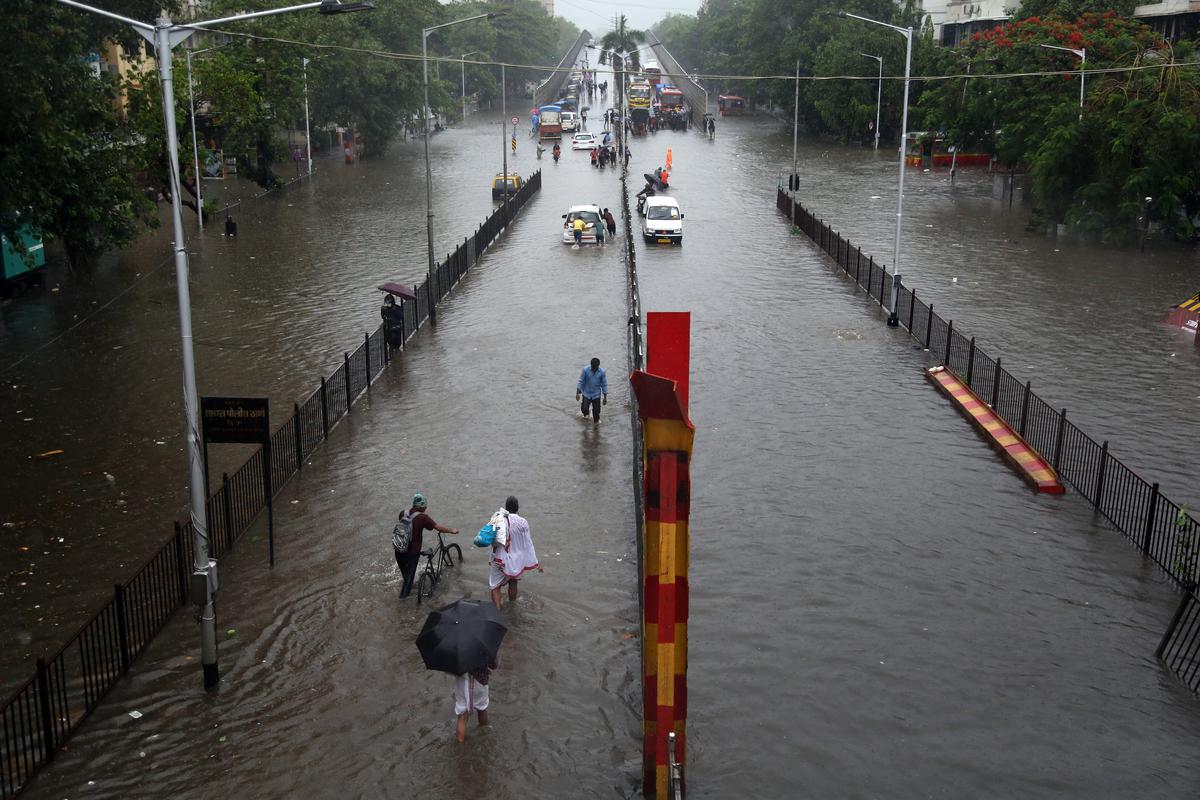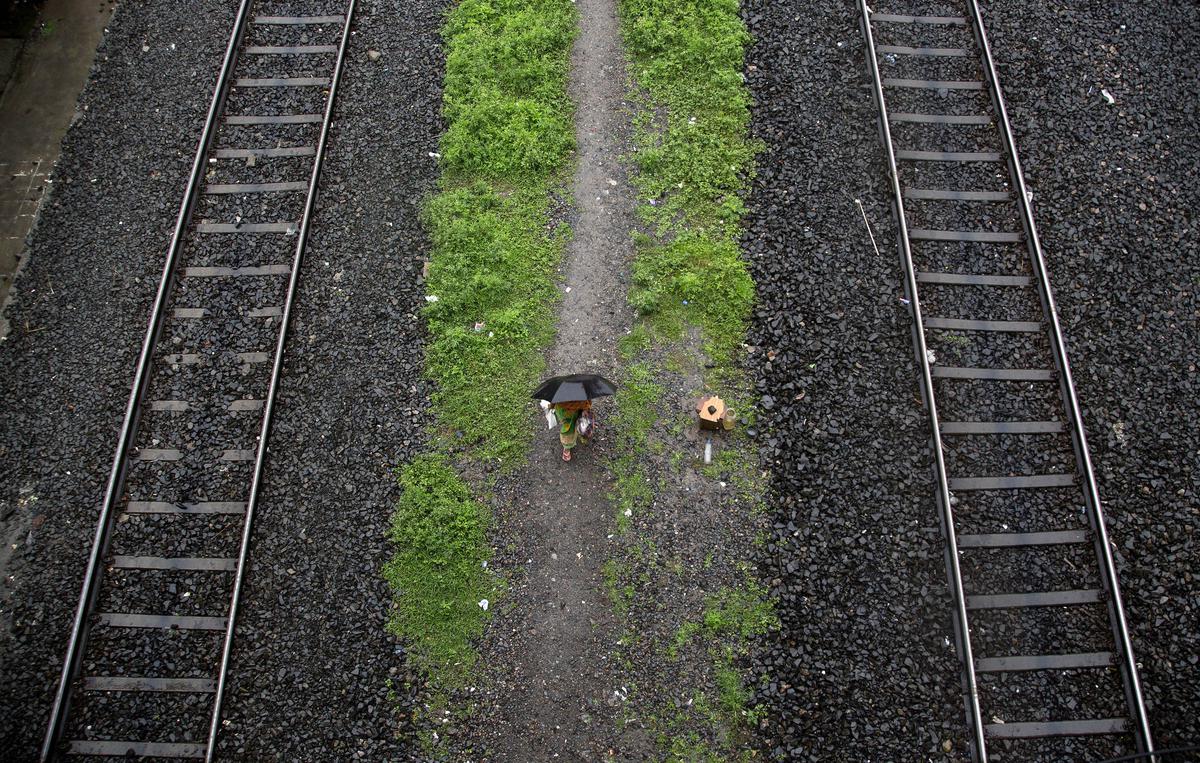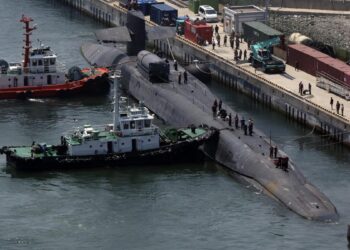[ad_1]
The story so far: The United Nations 2023 Water Conference held in New York on March 22-24 was the first such meeting on water after 46 years. The conference coincided with the mid-term comprehensive review of the International Decade for Action. In a report entitled ‘Water for Sustainable Development 2018–2028’, the U.N. recognised the urgent need for action given that we are not on track to meet the 2030 Sustainable Development Goal (SDG) no. 6 for water: “Ensure availability and sustainable management of water and sanitation for all”.
Before the conference began, it had lofty ambitions: to identify game-changing ideas; to make recommendations to policymakers on how to speed- and scale-up change through capacity development, data and information, innovation, financing, and governance; to place water at the centre of the climate agenda in activities building up to the High Level Political Forum (HLPF) in New York in July and the COP28 climate talks to be held in Dubai later this year.
What is the water conference?
Such international conferences serve to better align activities by governments, companies, NGOs, and funders around a few grand challenges. They also help countries learn from the experiences of others, transfer technology, and invest.
The water sector is particularly prone to fragmentation because water problems tend to be local – like, say, a particular lake is polluted, a particular area gets frequently flooded or a particular slum doesn’t receive drinking water – and need local solutions. So there is an inherent problem of how we can mobilise globally to solve local water problems.

People walk on a flooded road in Sion, Mumbai, June 9, 2021.
| Photo Credit:
Emmanual Yogini
The last U.N. Water Conference was held in 1977, and it was groundbreaking in achieving just this. In particular, it resulted in the first global ‘Action Plan’ recognising that “all peoples, whatever their stage of development and social and economic conditions, have the right to have access to drinking water in quantities and of a quality equal to their basic needs.”
This declaration led to several decades of global funding and concerted effort to provide drinking water and sanitation for all. These actions substantially reduced the population without access to safe drinking water in much of the developing world, in fact.
Was the new conference similarly effective?
Negotiating such a declaration is singularly hard because, unlike 50 years ago, today’s problems are more complex.
While addressing access to safe drinking water and sanitation (SGD 6.1 and 6.2) was and is challenging, extending services to underserved populations is relatively uncontroversial: it comes down to finding the money to pay for it. Indeed, this is already occurring in India through government programmes such as Swachh Bharat Mission and Jal Jeevan Mission.
The challenge is that improving access to water and sanitation no longer translates directly to sustained access to water and sanitation. For example, we know of many drinking-water projects that have already failed because they drew too much groundwater or their water sources were contaminated. This in turn resulted in communities “slipping back” into having no access.
A farm worker applies pesticide at a paddy field near Ramanathapuram, on December 11, 2022.
| Photo Credit:
L. Balachandar
Groundwater over-abstraction is mostly driven by agricultural pumping. But if we are to solve this over-abstraction problem in heavily irrigated places like Punjab or the Cauvery delta, there is just no other way than to pump less. There simply isn’t enough rainfall for everyone to grow paddy year-round; and while paddy has a minimum support price, other less water-intensive crops do not.
We also know farmers aren’t going to change their behaviour until agricultural policies change, which in turn requires many agencies and ministries to work together.
As such, the water problem is no longer about access to water and sanitation; these represent only two of the eight water-related SDGs. The remaining SDG 6 targets address the need to sustain agriculture, industry, and natural ecosystems. They have metrics that track better governance, improve efficiency of irrigation water use, restore the water quality in lakes and rivers, and improve wastewater management.
These problems are inherently harder because they can’t be fixed by better infrastructure. They require tough political choices, empowering agencies, and strengthening democratic processes.
What were the conference’s outcomes?
In the end, the complexity of today’s water problems was reflected in the conference’s proceedings: a lot of talk, fragmented discussions, and no binding commitments.
Instead, there were 713 diverse voluntary commitments by philanthropic donors, governments, corporations, and NGOs; 120 of these were relevant to India. They included a $50-billion commitment from the Indian government to improve rural drinking water services under its Jal Jeevan Mission.

A woman walks beside railway tracks in the rain in Guwahati, May 9, 2018.
| Photo Credit:
AP
The following are some commitments announced at the event, with examples of projects that showed potential:
Technology – There were specific innovations in wastewater treatment or solar treatment of water in remote areas, and a number of proposals for incubation platforms, including the IBM Sustainability Accelerator, focused on water management.
Data and models – Before every large investment, we must anticipate potential impact. Simulations are often important to do this, and they need large amounts of input data. Cost-effective approaches to data-generation included sensors and satellite data. Other efforts, like the World Meteorological Organisation’s Hydrological Status and Outlook System, offered data analysis tools.
Knowledge sharing – Solutions to most of these problems already exist, but each region and country often reinvents the wheel. We need to accelerate cross-learning. One useful tool here was the W12+ Blueprint, a UNESCO platform that hosts city profiles and case studies of programs, technologies, policies that addresses common water security challenges.
Capacity building – Many people lack access to basic services because they are unable to advocate for themselves and because infrastructure projects are designed for and by powerful actors in society. Efforts like the Making Rights Real initiative offered to help marginalised communities and women understand how to exercise their rights. Similarly, the ‘Water for Women Fund’ offered support mechanisms for more effective and sustainable water, sanitation, and hygiene outcomes for women.
Civil society – There were several platforms for collective action by civil society groups lobbying for changes in regulations, e.g. creating transnational networks to advocate for national and international bodies to criminalise the use of certain pesticides harmful to aquatic life.
Environmental, social, and corporate governance – The conference concluded that a big barrier to farmers and industries using water more efficiently is that they have no incentive. Specifically, farmers aren’t becoming more efficient or going pesticide-free unless consumers are willing to pay a premium for more sustainably produced goods.
Effective water governance hinges on these broad areas ,and weaving them into the Water Action Agenda is a step. But time will tell how we carry these commitments forward as we move into the HLPF and COP processes.
Dr. Veena Srinivasan is the Executive Director of Water, Environment, Land and Livelihoods (WELL) Labs, a new research centre affiliated with IFMR Krea University. Views are personal.
[ad_2]
[ad_1]
The story so far: The United Nations 2023 Water Conference held in New York on March 22-24 was the first such meeting on water after 46 years. The conference coincided with the mid-term comprehensive review of the International Decade for Action. In a report entitled ‘Water for Sustainable Development 2018–2028’, the U.N. recognised the urgent need for action given that we are not on track to meet the 2030 Sustainable Development Goal (SDG) no. 6 for water: “Ensure availability and sustainable management of water and sanitation for all”.
Before the conference began, it had lofty ambitions: to identify game-changing ideas; to make recommendations to policymakers on how to speed- and scale-up change through capacity development, data and information, innovation, financing, and governance; to place water at the centre of the climate agenda in activities building up to the High Level Political Forum (HLPF) in New York in July and the COP28 climate talks to be held in Dubai later this year.
What is the water conference?
Such international conferences serve to better align activities by governments, companies, NGOs, and funders around a few grand challenges. They also help countries learn from the experiences of others, transfer technology, and invest.
The water sector is particularly prone to fragmentation because water problems tend to be local – like, say, a particular lake is polluted, a particular area gets frequently flooded or a particular slum doesn’t receive drinking water – and need local solutions. So there is an inherent problem of how we can mobilise globally to solve local water problems.

People walk on a flooded road in Sion, Mumbai, June 9, 2021.
| Photo Credit:
Emmanual Yogini
The last U.N. Water Conference was held in 1977, and it was groundbreaking in achieving just this. In particular, it resulted in the first global ‘Action Plan’ recognising that “all peoples, whatever their stage of development and social and economic conditions, have the right to have access to drinking water in quantities and of a quality equal to their basic needs.”
This declaration led to several decades of global funding and concerted effort to provide drinking water and sanitation for all. These actions substantially reduced the population without access to safe drinking water in much of the developing world, in fact.
Was the new conference similarly effective?
Negotiating such a declaration is singularly hard because, unlike 50 years ago, today’s problems are more complex.
While addressing access to safe drinking water and sanitation (SGD 6.1 and 6.2) was and is challenging, extending services to underserved populations is relatively uncontroversial: it comes down to finding the money to pay for it. Indeed, this is already occurring in India through government programmes such as Swachh Bharat Mission and Jal Jeevan Mission.
The challenge is that improving access to water and sanitation no longer translates directly to sustained access to water and sanitation. For example, we know of many drinking-water projects that have already failed because they drew too much groundwater or their water sources were contaminated. This in turn resulted in communities “slipping back” into having no access.
A farm worker applies pesticide at a paddy field near Ramanathapuram, on December 11, 2022.
| Photo Credit:
L. Balachandar
Groundwater over-abstraction is mostly driven by agricultural pumping. But if we are to solve this over-abstraction problem in heavily irrigated places like Punjab or the Cauvery delta, there is just no other way than to pump less. There simply isn’t enough rainfall for everyone to grow paddy year-round; and while paddy has a minimum support price, other less water-intensive crops do not.
We also know farmers aren’t going to change their behaviour until agricultural policies change, which in turn requires many agencies and ministries to work together.
As such, the water problem is no longer about access to water and sanitation; these represent only two of the eight water-related SDGs. The remaining SDG 6 targets address the need to sustain agriculture, industry, and natural ecosystems. They have metrics that track better governance, improve efficiency of irrigation water use, restore the water quality in lakes and rivers, and improve wastewater management.
These problems are inherently harder because they can’t be fixed by better infrastructure. They require tough political choices, empowering agencies, and strengthening democratic processes.
What were the conference’s outcomes?
In the end, the complexity of today’s water problems was reflected in the conference’s proceedings: a lot of talk, fragmented discussions, and no binding commitments.
Instead, there were 713 diverse voluntary commitments by philanthropic donors, governments, corporations, and NGOs; 120 of these were relevant to India. They included a $50-billion commitment from the Indian government to improve rural drinking water services under its Jal Jeevan Mission.

A woman walks beside railway tracks in the rain in Guwahati, May 9, 2018.
| Photo Credit:
AP
The following are some commitments announced at the event, with examples of projects that showed potential:
Technology – There were specific innovations in wastewater treatment or solar treatment of water in remote areas, and a number of proposals for incubation platforms, including the IBM Sustainability Accelerator, focused on water management.
Data and models – Before every large investment, we must anticipate potential impact. Simulations are often important to do this, and they need large amounts of input data. Cost-effective approaches to data-generation included sensors and satellite data. Other efforts, like the World Meteorological Organisation’s Hydrological Status and Outlook System, offered data analysis tools.
Knowledge sharing – Solutions to most of these problems already exist, but each region and country often reinvents the wheel. We need to accelerate cross-learning. One useful tool here was the W12+ Blueprint, a UNESCO platform that hosts city profiles and case studies of programs, technologies, policies that addresses common water security challenges.
Capacity building – Many people lack access to basic services because they are unable to advocate for themselves and because infrastructure projects are designed for and by powerful actors in society. Efforts like the Making Rights Real initiative offered to help marginalised communities and women understand how to exercise their rights. Similarly, the ‘Water for Women Fund’ offered support mechanisms for more effective and sustainable water, sanitation, and hygiene outcomes for women.
Civil society – There were several platforms for collective action by civil society groups lobbying for changes in regulations, e.g. creating transnational networks to advocate for national and international bodies to criminalise the use of certain pesticides harmful to aquatic life.
Environmental, social, and corporate governance – The conference concluded that a big barrier to farmers and industries using water more efficiently is that they have no incentive. Specifically, farmers aren’t becoming more efficient or going pesticide-free unless consumers are willing to pay a premium for more sustainably produced goods.
Effective water governance hinges on these broad areas ,and weaving them into the Water Action Agenda is a step. But time will tell how we carry these commitments forward as we move into the HLPF and COP processes.
Dr. Veena Srinivasan is the Executive Director of Water, Environment, Land and Livelihoods (WELL) Labs, a new research centre affiliated with IFMR Krea University. Views are personal.
[ad_2]
















